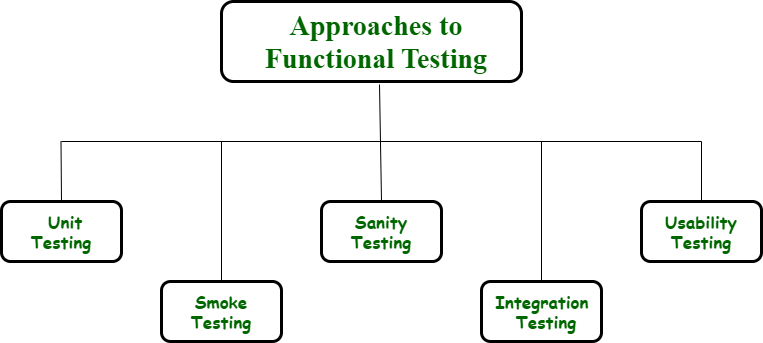Various Approaches to Functional Testing
Last Updated :
06 Jul, 2020
Functional testing is a process of quality assurance of a product in which quality is checked and maintained. This testing is generally performed to check and verify proper functioning of software applications i.e., to check whether software application performs and functions correctly in a proper way according to design specifications.
During testing, we simply check core application functions, text input, menu functions, and so on. In these types of testing, main aim to concentrate on and fulfill customer requirements. Each functionality of software system is tested by providing correct input, verifying or checking output, and comparing obtained results with expected results.
Approaches to Functional Testing :

- Unit Testing –
Unit Testing as name suggests is testing functionality of a unit of software individually. The unit can be a module, class, component, element, individual function, method, or procedure. This type of testing is very useful in detecting errors or bugs or defects at beginning of software development life cycle. Unit testing decreases or reduces overall cost of developing and development time of software. Two types of unit testing can be done, i.e., Manual and Automated.
- Smoke Testing –
The main aim of this testing includes checking whether most critical, important, and vital functions of a software system works properly or not. The result of this testing decides whether demo or a pre-released version of program which is also known as “build” is stable or not for further testing process. It simply checks stability of system and is performed by both developers and testers. That’s why smoke testing is also known as Build Verification Testing.
- Sanity Testing –
The main aim of this testing includes focusing only on new functional areas of an application whether they are working properly and errors are fixed or not. This testing is done after receiving a software build from smoke testing with small changes in code or functionality checks whether bugs or error are fixed or not and is there any other issue arises due to changes. This type of testing is only done by testers.
- Integration Testing or Regression Testing –
The main aim of this testing includes checking and detecting if there is any error or defects in interaction between two software units or modules or integrated units of application. It tests an application as a whole or group. It discloses faults or defects in interaction between integrated units.
- Usability Testing –
The main aim of this testing includes ensuring that user is satisfied with application and how easy it is for user to use system application. It identifies if there is any problem while using software applications.
Like Article
Suggest improvement
Share your thoughts in the comments
Please Login to comment...